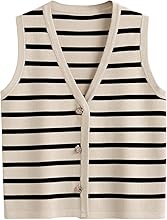Why Carnatic vocalist Krithika Sreenivasan is setting Kannada poetry to classical melodies
The Hindu
Carnatic vocalist Krithika Sreenivasan setting Kannada poetry to classical melodies
Vocalist Krithika Sreenivasan and her mridangist sister Deepika are both happy that the two-part series of the duo’s Kannada Kavya Kamanabillu streamed on YouTube has had an overwhelming response. The recently launched programme musically presents and discusses classics to help laymen understand Kannada poetry in its entirety
“We had dealt with lyrics of Kannada poets starting from Adikavi Pampa to modernists DV Gundappa and Pu. Ti. Narasimhachar. Since scholars and the musically inclined have appreciated this effort of the novel documentation of poems, I would like to take up Mahila Haridasas’ works in my third series,” says Krithika.
Mahila Haridasas’ compositions, she says, have often been under-utilised from the Dasa pantha repertoire for various reasons. “This series on Mahila Haridasas, to be released by the year-end, will give a brief insight into the life and works of women composers and will be followed by a presentation of one of their compositions.”
Given Krithika’s musical and literary family background, the challenge was in having classical poems explained and presented in melody. “I come from a family of musicians and academicians and I wanted Kannada Kavya Kamanabillu to encompass this richness.”
“My father, ML Sreenivasan, a microbiologist, practices the flute and my mother, Geetha Sreenivasan, an English professor, translator and writer, is a vocalist and sitarist. My sister, Deepika, who is a mridangist, receives advanced training from vidwan Patri Satish Kumar, while I continue to receive advanced guidance from senior vidwans such as Anoor Ananthakrishna Sharma and Chitravina Ravikiran,” says the software engineer turned Education Manager at the Indian Music Experience (IME) Museum in Bengaluru.
Krithika’s grandfather, Dr CN Ramachandran (Dr. CNR), renowned litterateur, has been the biggest inspiration behind choosing Kannada literature for Kannada Kavya Kamanabillu. “My grandfather’s deep dive into Kannada classical poetry through different eras, paved the way for us to explore facets of Kannada poetry. Apart from CNR, Dr. BA Vivek Rai has also helped us with the selection of padyas for our video project.”
Kannada poetry is not unusual on concert platforms, says Krithika. “There are so many unexplored facets. While Kannada literature boasts a rich repertoire, of which Haridasa compositions form a major part, they are not the only metrical forms to represent Kannada poetry as is the general perception. Apart from Haridasa compositions, from the classical period to modern, we have variants of metrical forms such as Vrutta, Vachana, Tripadi, Kandapadya, Ragale, Shatpadi, Ugabhoga, Sooladi, Mundige, Tatvapada, Sangatya, Rangageethe, Bhavageethe and Kagga to name a few.”





















 Run 3 Space | Play Space Running Game
Run 3 Space | Play Space Running Game Traffic Jam 3D | Online Racing Game
Traffic Jam 3D | Online Racing Game Duck Hunt | Play Old Classic Game
Duck Hunt | Play Old Classic Game